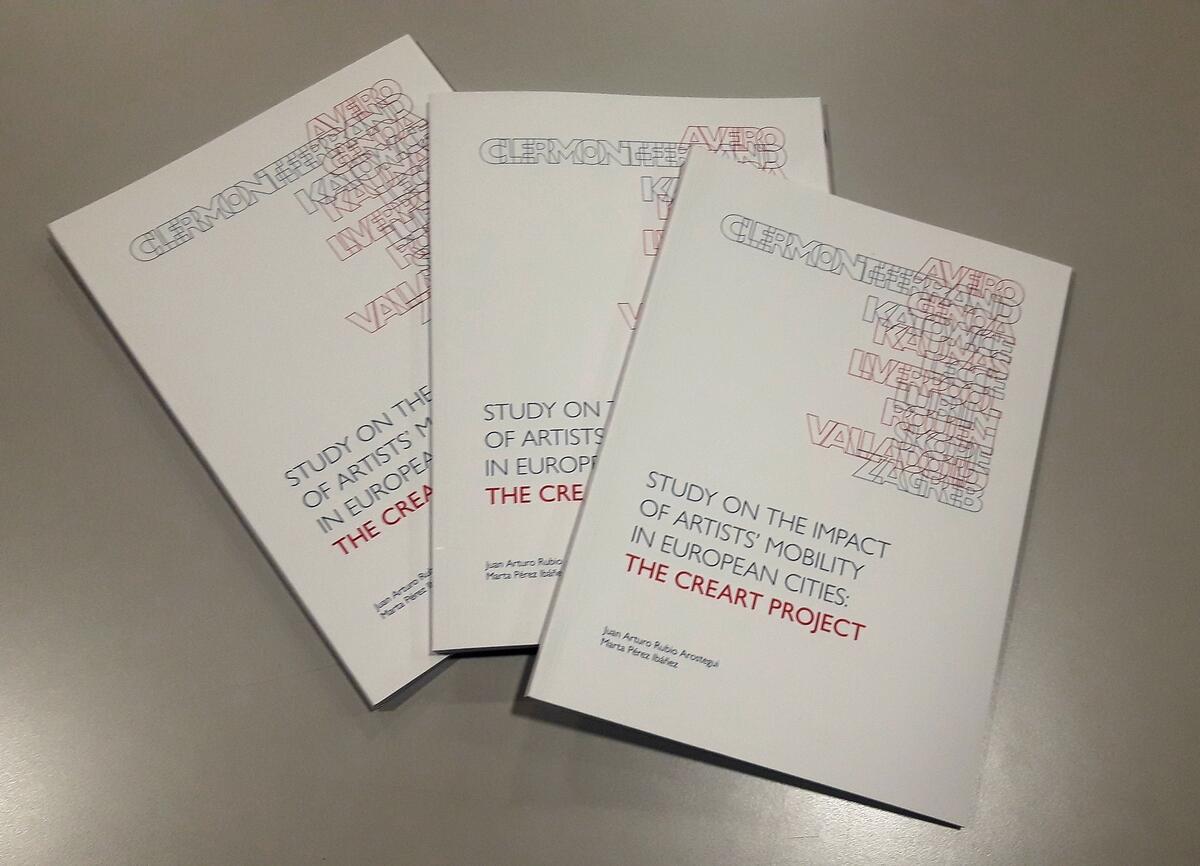Available to download our Research Study on Impact of Artists mobility in CreArt Cities
“Impact of artistic mobility in CreArt cities” is the second research study, commisioned by CreArt Project, after “Contribution of artistic creation to local development”, presented in 2016. This Publication released in February 2021, and presented online by the Universidad Nebrija on 29th April, has been coordinated by the researchers, Marta Pérez Ibáñez and Juan Arturo Rubio Arostegui and has been developed during 2020 with the support of the partner cities.
Cultural policy has gained centrality in recent decades in relation to its importance as an element of economic development and its key role in local strategies for the regeneration and urban branding and tourism, which has placed it on a central position in the political agenda. Thus, cities have taken the prominence that in the seventies and eighties had national cultural policies (and regional, in the case of more decentralized European countries). It is precisely in the mid-nineties when the idea of the creative city arises in the Anglo-Saxon context (Landry and Bianchini, 1995) and local cultural policies begin to carry out a good part of their entrepreneurial strategies in order to plan their¡ development and their competitive capacity at a national and international level (Menger, 2009). However, especially in Spain, but in other European cities as well, the development of the creative city paradigm has drawn very negative experiences in medium-sized cities (Alcorcón, among others) and medium-large (Santiago de Compostela, Valencia).
In this context, medium-sized cities try to compete with European cultural capitals (Madrid, Barcelona, Berlin, Paris, Vienna, London, etc.) in the field of arts, cultural industry and tourism, in a strongly competitive global environment. It is in the cultural capitals where artists and cultural clusters, the private initiative, the non-profit sector and the public cultural State infrastructures (museums, opera houses, headquarters of the most prestigious public companies) are concentrated, whereas medium-sized cities try to exploit arts and culture, although we may distinguish very negative experiences (Ciudad del Cine in Alicante, apart from the ones mentioned previously). Cultural capitals, all kinds of them (Charle, 2009), have a strong attraction capacity which is projected both on the city brand and on its stereotypes (imagined city). Thus, the city branding (symbolic capital) is associated with the production of images of the city through arts and cultural industry and its globalized external reception from out of the city (the cinematographic city, the literary city, the city painted, the theatrical city, the musical city) from which later cultural industries such as tourism are nurtured.
Confronted to this cultural capital model there are medium-sized cities which have fewer resources in all their forms of capital (cultural, artistic, economic and symbolic), sometimes being at the mercy of a concept of wrong and ideologically biased creativity, and exposed to speculation and to the building of great artistic and cultural infrastructures without a cultural project supporting them.
It is in this cultural policy paradigm that the CreArt project is framed, starting from these ideal city models. Nevertheless, several independent variables specific to each city have been considered in order to explore parallelisms and to take into account their differential structural frameworks, with the aim of delving into the concept of a European medium-sized creative city within the project we have evaluated.
This project aims to serve as an accountability tool for the European CREART project, financed by the Creative Europe Program. It will evaluate the artistic, social and economic impacts within the framework of an urban cultural policy analysis, in the economic and financial post-crisis context, and due to the exhaustion of Fordist public policies, linked to the Welfare State.
The project, focused on the field of visual arts, has the collaboration of a set of medium sized European cities which conform to the paradigm of the creative city that must be analysed in the project, according to the premises included in the project document itself.
Beyond the content index, and the initial approach, this study revolves around the following axes of analysis:
• Contextualize the CreArt project in the debate on the creative city paradigm within the academic field that affects medium-sized cities with special impact.
• State the impact of the program based on the production of primary data, unlike the previous evaluation carried out by KEA.
• Contextualize the data and the conclusions of the impact of CreArt with the international debate on artistic mobility and other similar studies
The Study is available for free download in this link: https://creart2-eu.org/creart-research-study/
Return to CreArt News







